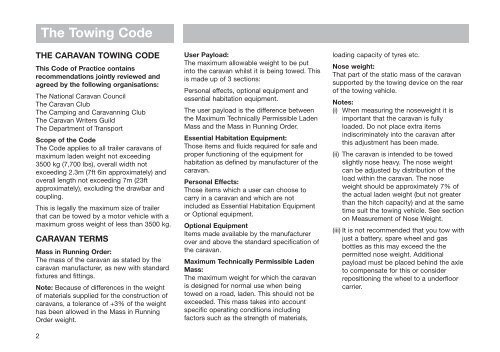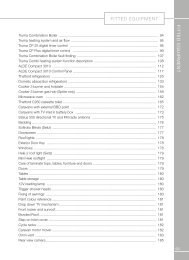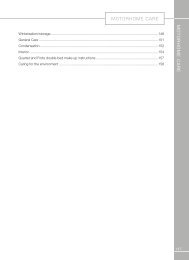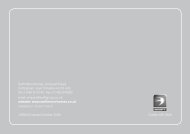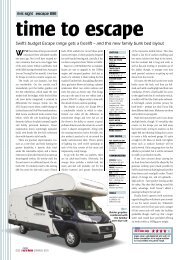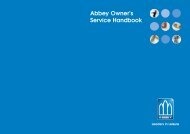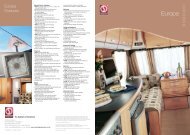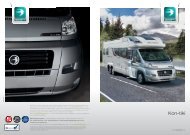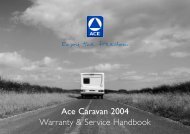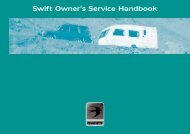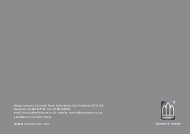Swift Owner's Handbook - Swift Group
Swift Owner's Handbook - Swift Group
Swift Owner's Handbook - Swift Group
- No tags were found...
Create successful ePaper yourself
Turn your PDF publications into a flip-book with our unique Google optimized e-Paper software.
The Towing CodeTHE CARAVAN TOWING CODEThis Code of Practice containsrecommendations jointly reviewed andagreed by the following organisations:The National Caravan CouncilThe Caravan ClubThe Camping and Caravanning ClubThe Caravan Writers GuildThe Department of TransportScope of the CodeThe Code applies to all trailer caravans ofmaximum laden weight not exceeding3500 kg (7,700 lbs), overall width notexceeding 2.3m (7ft 6in approximately) andoverall length not exceeding 7m (23ftapproximately), excluding the drawbar andcoupling.This is legally the maximum size of trailerthat can be towed by a motor vehicle with amaximum gross weight of less than 3500 kg.CARAVAN TERMSMass in Running Order:The mass of the caravan as stated by thecaravan manufacturer, as new with standardfixtures and fittings.Note: Because of differences in the weightof materials supplied for the construction ofcaravans, a tolerance of +3% of the weighthas been allowed in the Mass in RunningOrder weight.2User Payload:The maximum allowable weight to be putinto the caravan whilst it is being towed. Thisis made up of 3 sections:Personal effects, optional equipment andessential habitation equipment.The user payload is the difference betweenthe Maximum Technically Permissible LadenMass and the Mass in Running Order.Essential Habitation Equipment:Those items and fluids required for safe andproper functioning of the equipment forhabitation as defined by manufacturer of thecaravan.Personal Effects:Those items which a user can choose tocarry in a caravan and which are notincluded as Essential Habitation Equipmentor Optional equipment.Optional EquipmentItems made available by the manufacturerover and above the standard specification ofthe caravan.Maximum Technically Permissible LadenMass:The maximum weight for which the caravanis designed for normal use when beingtowed on a road, laden. This should not beexceeded. This mass takes into accountspecific operating conditions includingfactors such as the strength of materials,loading capacity of tyres etc.Nose weight:That part of the static mass of the caravansupported by the towing device on the rearof the towing vehicle.Notes:(i) When measuring the noseweight it isimportant that the caravan is fullyloaded. Do not place extra itemsindiscriminately into the caravan afterthis adjustment has been made.(ii) The caravan is intended to be towedslightly nose heavy. The nose weightcan be adjusted by distribution of theload within the caravan. The noseweight should be approximately 7% ofthe actual laden weight (but not greaterthan the hitch capacity) and at the sametime suit the towing vehicle. See sectionon Measurement of Nose Weight.(iii) It is not recommended that you tow withjust a battery, spare wheel and gasbottles as this may exceed the thepermitted nose weight. Additionalpayload must be placed behind the axleto compensate for this or considerrepositioning the wheel to a underfloorcarrier.


